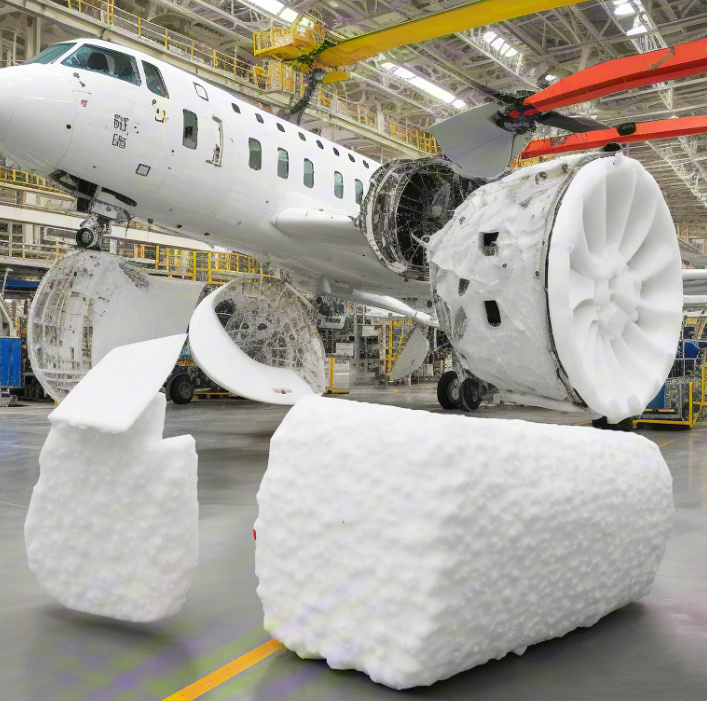
How PMI Foam is Revolutionizing Aerospace
The aerospace industry is a constant quest for innovation, driven by the twin demands of achieving lighter weights and greater strength. Every gram saved translates into increased fuel efficiency, higher payloads, and enhanced performance. For decades, engineers have relied on traditional materials, but a new era is dawning with the widespread adoption of PMI foam (Polymethacrylimide). This advanced structural foam is rapidly becoming the core of next-generation aircraft design, from commercial airliners to cutting-edge military jets and space vehicles.
The Core of Lightweight Construction
At its heart, PMI foam is a high-performance polymer foam that offers an exceptional strength-to-weight ratio. Its rigid, closed-cell structure provides a foundation for creating sandwich panels. In this construction, a lightweight core material (PMI foam) is bonded between two strong, thin composite skins, such as carbon fiber. The result is a component that is incredibly stiff and strong, yet remarkably light. This "sandwich" principle is not new, but PMI foam's superior properties make it an ideal core material.
One of the most significant advantages of PMI foam is its high compressive strength and shear strength. In aerospace applications, components are subjected to immense forces, and the core material must be able to withstand these stresses without deforming. PMI foam excels in this regard, maintaining its structural integrity under extreme loads. This allows engineers to design parts that are thinner and lighter without compromising safety or performance.
Beyond the Wing: Diverse Applications in Aircraft
While PMI foam is most famously used in aircraft wings and fuselage structures, its applications are far more diverse. You can find it in a variety of critical components:
- Rotor Blades: For helicopters and unmanned aerial vehicles (UAVs), PMI foam provides a lightweight, durable core for rotor blades, improving efficiency and maneuverability.
- Fuselage and Wing Fairings: These aerodynamic covers, which smooth the airflow over joints and other components, benefit from PMI foam's lightweight and easy-to-shape nature.
- Interior Panels: In commercial airliners, using PMI foam in overhead bins, galleys, and floor panels significantly reduces the overall weight of the cabin, contributing directly to fuel savings.
- Satellite and Launch Vehicle Structures: Its ability to perform in extreme thermal and vacuum environments makes it an excellent choice for a variety of space applications, from satellite platforms to rocket fairings.
Why PMI Foam is a Game-Changer
PMI foam's rise in aerospace is no accident; it's a direct result of several key properties that address the industry's most pressing needs.
First, its high-temperature resistance is crucial for manufacturing. PMI foam can withstand the high temperatures required for curing advanced composite materials like carbon fiber reinforced polymers (CFRPs). This compatibility streamlines the manufacturing process, allowing for the co-curing of the core and skin layers in a single, efficient step.
Second, the uniformity and workability of PMI foam are major assets. Its fine, uniform cell structure allows for precise machining, enabling the creation of complex shapes and contours that are essential for modern aerodynamic designs. This workability gives engineers unprecedented freedom in designing parts.
Finally, the material's fatigue resistance is vital for long-term reliability. Aircraft components are subject to millions of stress cycles throughout their service life. PMI foam maintains its properties over these cycles, ensuring the long-term integrity and safety of the aircraft structure.
As the aerospace industry continues to push the boundaries of what is possible, advanced materials like PMI foam will be at the forefront. Its unique blend of strength, light weight, and high-temperature performance is not just an incremental improvement—it's a fundamental shift in how aircraft are built.

PMI foam
Latest News
Previous Page
Next Page




